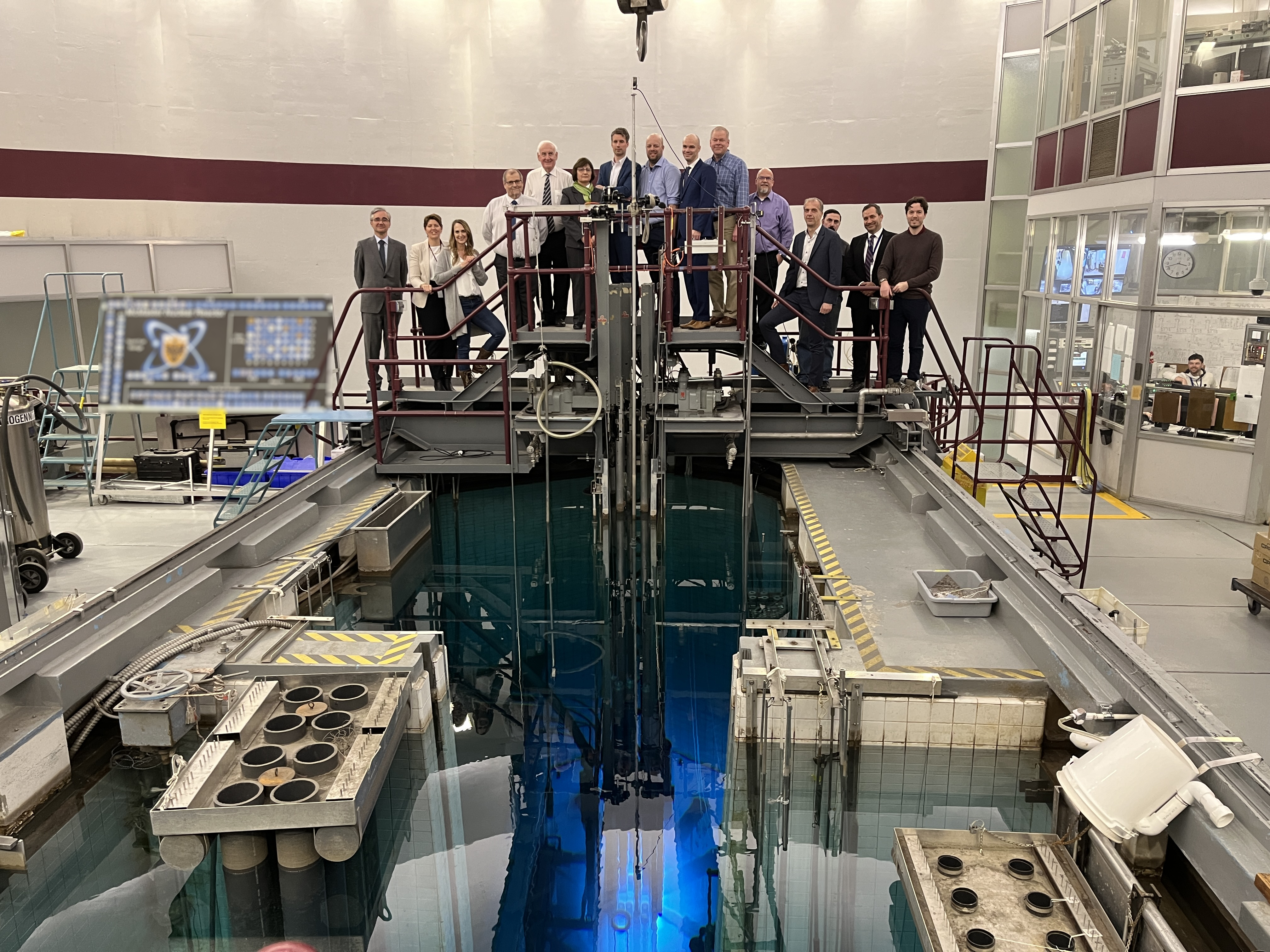IAEA review of the McMaster Nuclear Reactor supports plans for expansion

McMaster welcomed a team of international nuclear experts to campus at the start of 2024 for an in-depth evaluation focused on the research, education and commercial utilization of the McMaster Nuclear Reactor (MNR) and its plans for expansion.
The review was led by the International Atomic Energy Agency (IAEA) – the world’s centre for cooperation in the nuclear field, headquartered in Vienna, Austria – as part of their Integrated Research Reactor Utilization Review (IRRUR) mission.
The McMaster Nuclear Reactor, built in 1959, is Canada’s largest nuclear research reactor and anchors the University’s world-class suite of nuclear research facilities.
The IAEA review team, led by research reactor specialist Nuno Pessoa Barradas, toured the reactor and met with the University’s nuclear operations and health physics experts, as well as researchers from the Faculties of Engineering and Science, to learn more about MNR’s history of excellence and impact in the nuclear space.
“The MNR is a truly multipurpose reactor,” says Barradas.
“In spite of its relatively low power, it is one of the top 10 world producers of medical radioisotopes. It is used for nuclear materials irradiation, has post-irradiation examination facilities, conducts a neutron beam programme, and is developing what will be one of the world’s very few intense positron beam facilities, and the only one in the Americas.”
The review took place at a pivotal time for MNR. In 2023, McMaster received a total of $13.6M in funding from the Government of Canada and Government of Ontario to expand medical isotope production and increase operating hours at MNR to enable more research in nuclear medicine, materials science, clean energy and small modular reactors (SMRs).
Dave Tucker, McMaster’s Chief Nuclear Officer and Associate Vice-President, Nuclear, says the review enabled McMaster’s nuclear team to gather valuable feedback from experts ahead of the reactor’s plans for expansion.
“As Canada’s Nuclear University and the home of Canada’s most-powerful nuclear research reactor, McMaster is eager to work with our partners in nuclear to maximize the utilization of our facilities and identify opportunities to build upon our global leadership in medical isotope production and commercialization, clean energy and materials research, while training the next generation of nuclear industry leaders,” he says.
“We’re extremely grateful for the insights and expertise provided by the IAEA review team as we chart an exciting future for the McMaster Nuclear Reactor.”
The review team noted MNR’s exceptional utilization practices and shared several recommendations to enhance usage of the reactor, including though expanded education and training opportunities that can help prepare Canada’s future nuclear workforce.
“We are revising our strategic plans to incorporate the feedback provided by the IRRUR mission and are actively pursuing expanded utilization of the MNR to sustain and enhance a world-class facility for neutron-based science that drives McMaster’s continued excellence in nuclear research, innovation and training,” says Karin Stephenson, McMaster’s Director of Nuclear Research and Education Support.
The MNR IRRUR mission was the first to be conducted in Canada. Eight experts from Australia, Canada, Czech Republic, Netherlands, USA and the IAEA took part in the mission.
“What sets this IRRUR mission apart is its rare occurrence within Canada’s research reactor landscape. The request for IAEA assistance highlights the pivotal role of the IAEA and global experts collaborating to shape the future of nuclear science applications,” says Barradas.
In addition to the MNR, the review team visited the Centre for Advanced Nuclear Systems (CANS), the McMaster Accelerator Laboratory (MAL), the Canadian Neutron Beam Laboratory (CNBL) and the High-Level Laboratory Facility (HLLF) – all of which contribute to McMaster’s unique nuclear research, training and innovation ecosystem.
News